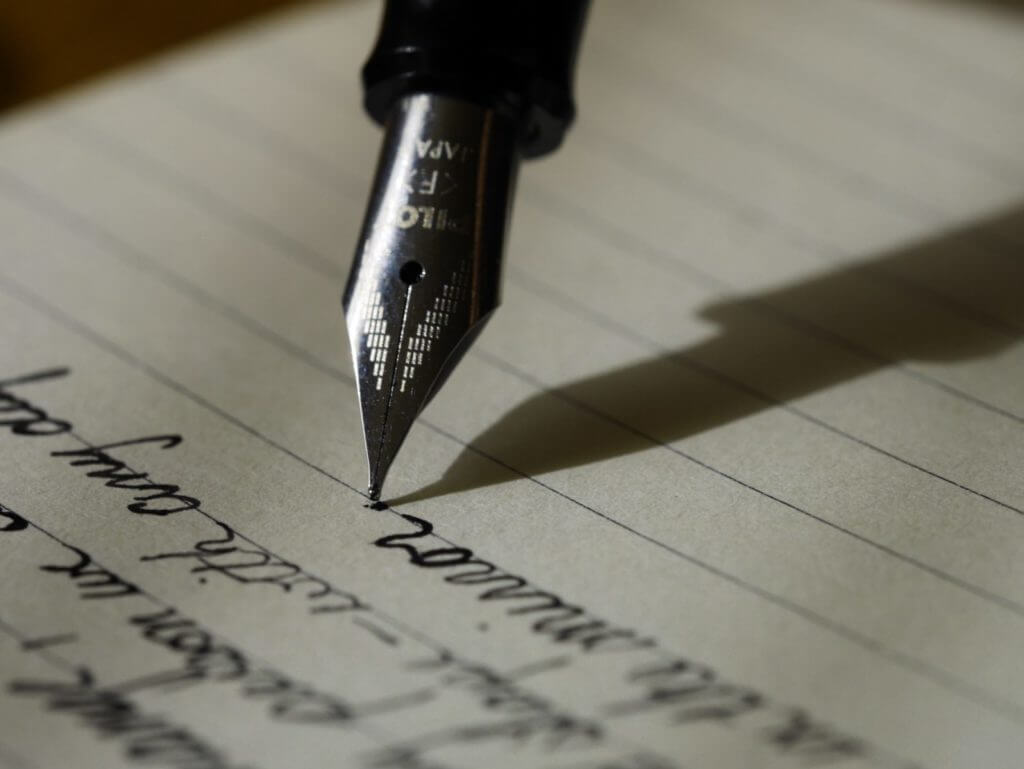When we think of writing using computers, we typically imagine rows of fonts, smashing keys, and endless backspacing. Those actions go perfectly with the rigid nature of the digital world. Everything is precise and uniform, without the flair of personal expression.
The delicate art of calligraphy is typically ignored when computers are part of the topic, but why? Believe it or not, computers are not strictly limited to the rigours set by keyboards and fonts. With a little bit of effort, the stylish art of calligraphy can be smoothly performed—and perhaps even improved upon—using computers
Getting started with digital calligraphy
Unlike traditional calligraphy, there is no need for special pens, inks, or papers. Even better, no matter how much you practice, you’ll never run out of paper or ink.
However, if you are on a desktop machine, you will ideally want to purchase a stylus device like a drawing tablet. You will also want some quality software that comes with various brush presets, and preferably allows you to create your own. Luckily, these are much more affordable than you might think—I’ll go over some of your options further down.
For tablet and phone users, all you need is to pick a drawing app that suits your style. The touchscreen makes it all quite simple. (Although you may find that the basic drawing apps don’t have quite enough features, so I always recommend an app that specifically has calligraphy in mind.)
Once you have the essential tools, you can begin practising digital calligraphy, but your journey is only just starting. Here’s how to get the most of your calligraphy experience:
Digital calligraphy software
In order to be truly proficient at calligraphy using computers, you need the right software. Many of these cost a fair penny to purchase, but there are also some free alternatives that you can use if you are not ready to invest in a professional tool.
Adobe Photoshop
The most popular graphics software for professionals, Adobe Photoshop is the pinnacle of digital art. Though the software is expensive and rather complex, Photoshop excels at providing you with a multitude of different brushes. Many of the brushes are free, and the ability to use layers gives you the opportunity to blend and overlay your letters, creating effects that are difficult with a physical medium.
Adobe Photoshop also has many other features that can be of use to a calligrapher. You can simulate inks using special brush settings, sharpen and burn your lines to create special effects, or you can apply filters and turn your writing into something that looks truly from the digital age.
Adobe Illustrator
While Photoshop is generally more popular with digital artists, Adobe Illustrator is the cherished tool of digital illustrators. Much of the photo-editing fluff that comes with Photoshop is left out by Illustrator. It also has the added benefit of vector graphics, which means your writing can be easily scaled larger or smaller without loss of quality.
Adobe Illustrator also has a lower price point than Photoshop, meaning you do not have to invest so heavily. But of course, you also won’t have access to all the image editing features and extra effects that come with Photoshop.
GIMP
GIMP is a free, open source alternative to Adobe Photoshop. Most of the features available in Photoshop are available in GIMP, and without the cost. The disadvantage with GIMP is that its interface is not as streamlined as Photoshop, so there might be a longer adjustment period.
In addition, GIMP is not supported by as many graphics tablets as Photoshop, so if you’re shopping for a tablet, do make sure it works with your software.
Calligrapher (an app for Android)
One popular app for calligraphy is Calligrapher. This app has simple features for pens and pencils and works with your phone’s touch screen. There are calligraphy-focused features like slope angle and line thickness, as well as pen colour and transparency.
Of course, you won’t find as many bells and whistles as Photoshop or Illustrator, but it is a great calligraphy tool for your phone.
Digital calligraphy devices
If you really want to express your writing in style, you’ll need to invest in a digital calligraphy device. These range from simple smartphones and tablets to digital drawing tablets that are made to simulate pen and paper.
Drawing tablets
These devices may or may not have a screen, but they will always have a stylus for natural drawing and handwriting. The most popular brand is Wacom, which produces a range of devices from the low-cost Wacom Intuos Draw (which does not have a screen and is aimed at beginners) to the professional grade Wacom Cintiq, which has a touch screen and can be used as intuitively as your brush and canvas.
Smartphones and tablets
These devices naturally have a touch screen, and many have the ability to utilise a stylus pen. They are normally not as accurate as drawing tablets, but their touch screen provides an simple transition from physical to digital if you’re looking to get started quickly and easily.
Is it time to go digital?
If you’ve always wanted to try calligraphy, but hesitated at investing in pens, nibs, ink, paper and lessons, why not try digital calligraphy instead? It’s as easy as installing digital calligraphy software on your desktop computer, or getting a simple calligraphy app on your smartphone.
Hopefully this guide will have whet your appetite for stylised writing in the digital world—and if you’d like more info on calligraphy in general, make sure to check out this beginners guide to doing calligraphy.
This post may contain affiliate links.

